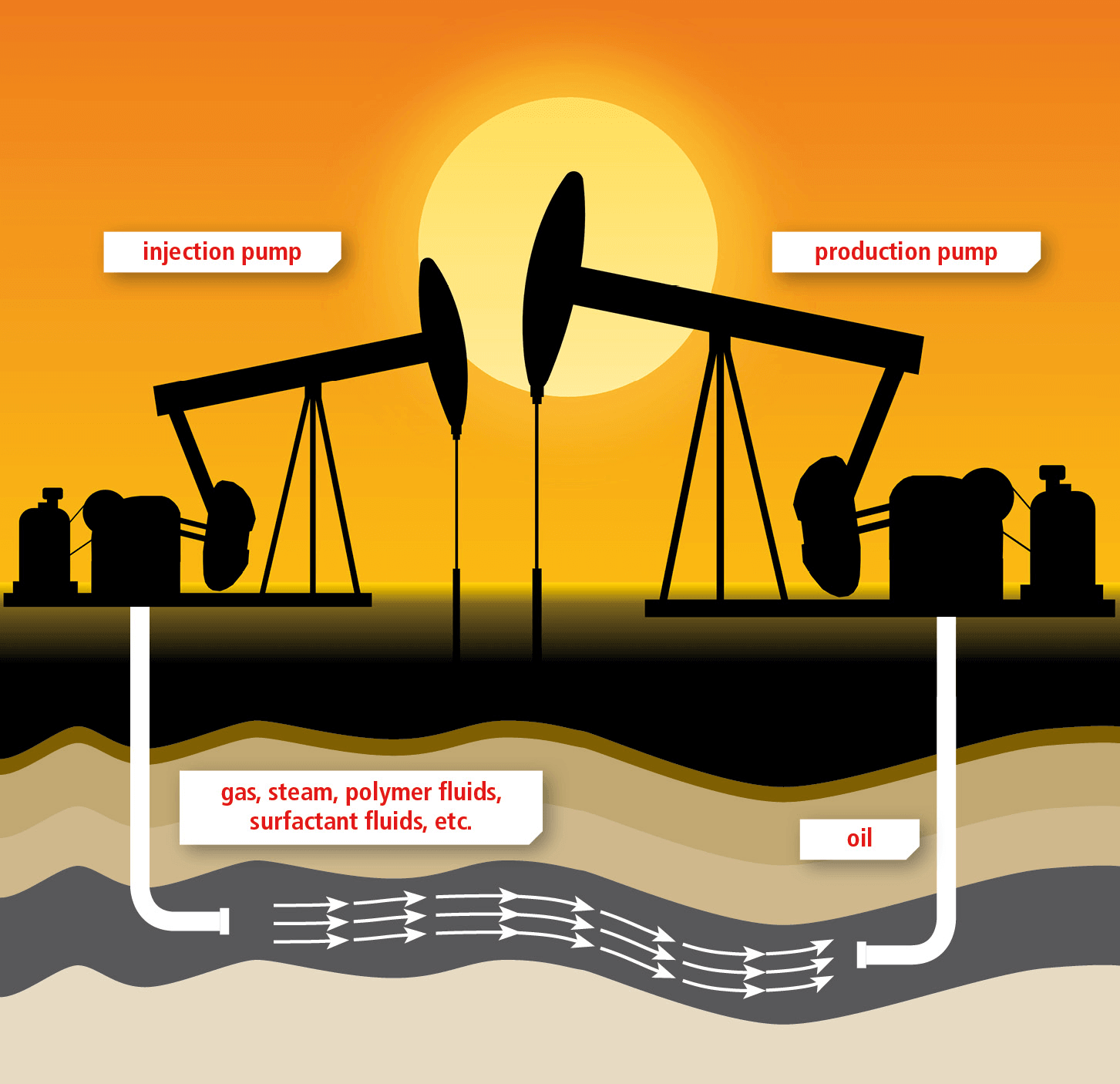Texas A&M Case Study
The laboratory of the Harold Vance Department of Petroleum Engineering at Texas A&M University uses five Memmert heating ovens, a vacuum oven, and a humidity chamber to research how to improve the exploitation of oil reservoirs.
In a scene of “Giant”, the last movie of James Dean’s career, his character Jett Rink strikes oil and stands under a fountain of oil, completely covered in the black gold – quite iconic! Reality however, is certainly less dramatic. Luckily, today’s stop valves prevent fountains like this, with oil shooting uncontrollably out of their underground reservoir due to its pressure. The first phase of oil production is referred to as primary recovery. If the reservoir pressure drops after some time, water or natural gas can be pressed into the reservoir through injection wells on the side during secondary recovery to increase the pressure. By combining primary and secondary recovery, it is possible to extract between 30 and 50 % of the oil reservoir's contents. With increasing oil prices and dwindling oil reserves, tertiary recovery methods are becoming ever more interesting. By pressing in hot steam or injecting gases, organic polymers or surfactants, the valuable material can be extracted from oil-bearing rocks, minerals and even from oil-covered grains of sand. Depending on the conditions in the reservoir, the yield can be increased to 50 to 70 % this way. (Muggeridge A., 2013)
 Tertiary Recovery: Injecting CO2 or Surfactants
Tertiary Recovery: Injecting CO2 or Surfactants
In the laboratory of the Harold Vance Department of Petroleum Engineering at Texas A&M University, the students’ main field of research is flooding oil reservoirs with surfactants, for example, CO2. In the latter case, the pressure in the reservoir increases and at the same time the viscosity of the oil decreases, as the gas partially dissolves in the oil.
The adhesion forces acting between the water and the oil prevent them from mixing, making flooding with water alone inefficient. The reason for that is the strong cohesion of the water molecules, which want to – simply put – keep to themselves. Surfactants (surface active agents) reduce the surface tension between the flooding water and the oil. Oil droplets deform more quickly and more oil from fine-pored rock disperses into the flood water. In addition to the surfactant composition, the main parameters influencing the efficiency of surfactant flooding are the temperature and salt concentration in the rock, the rock’s absorptive capacity, the pressure conditions as well as the rock’s porosity (Iglauer S., 2009).
Gas injection can be under miscible or immiscible conditions. Injection under miscible conditions is much more efficient as there is no interphase preventing the gas to completely mix with the oil and drive it to the producing wells. When a complete mixing is not achieved, the flooding is said to be carried out under immiscible conditions, however, partial mixing still happens prompting some of the oil components to vaporize into the gas and some of the gas to dissolve into the oil. Pressure, temperature, and oil composition control the occurrence of miscibility.
Controlled atmosphere in Memmert temperature control appliances.
In the Texan institute, experimental core flooding tests are performed. They physically simulate enhanced oil recovery by the injection of fluids at reservoir conditions of pressure and temperature. Test samples are oil-bearing rock strata, stored in metal cylinders at high pressure. The precise temperature control required for these tests is trusted by the researchers to the Memmert heating ovens and commonly ranges between 65 and 120 °C. The test setup consists of syringe pumps for the precise injection of liquids, liquid reservoirs and measuring equipment to determine permeability, monitor pressure drop in the rock core and the incremental oil recovery attained. With this setup, tests for all common and novel EOR technologies such as gas, surfactant, foam and nanoparticle flooding can be made. The test setup in the interior is connected to external equipment through openings in the heating oven's sides.
As part of the preparation of the core samples, a solvent extraction process is performed, then the samples are vacuum dried in the Memmert vacuum drying oven VO. The unconventional core samples, such as oil-bearing shales, are prone to lose moisture resulting in the formation of microcracks, therefore, they are stored at controlled conditions of humidity and temperature in the humidity chamber HCP.
References & Sources:
Tovar et al. (2015). Experimental Investigation of Polymer Assisted WAG for Mobility Control in the Highly Heterogeneous North Burbank Unit in Oklahoma, Using Anthropogenic CO2
Iglauer S., W. Y. (December 2009). New surfactant classes for enhanced oil recovery and their tertiary oil. Journal of Petroleum Science and Engineering.
Muggeridge A., C. A. (December 2013). Recovery rates, enhanced oil recovery and technological limits. Philosophical Transactions A of The Royal Society.

